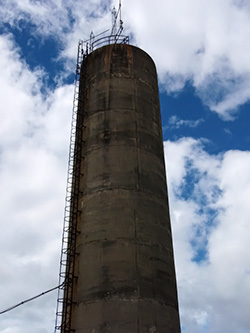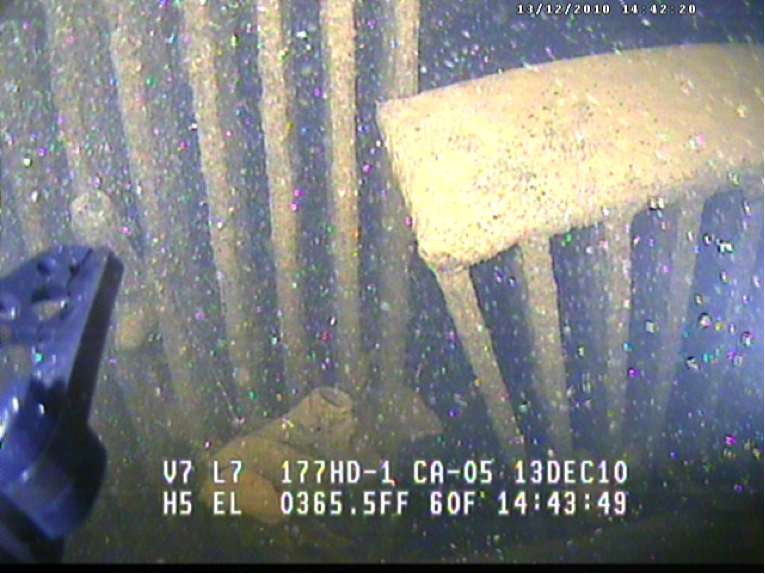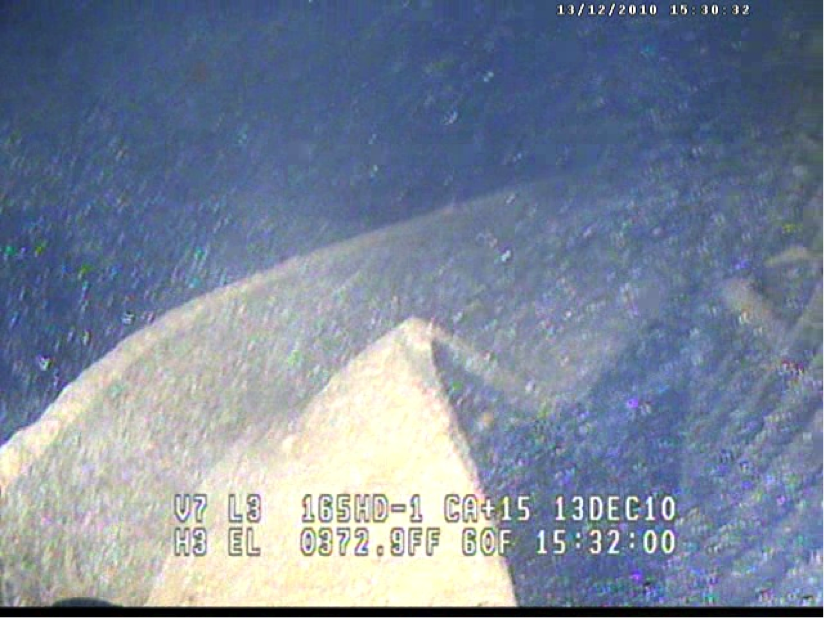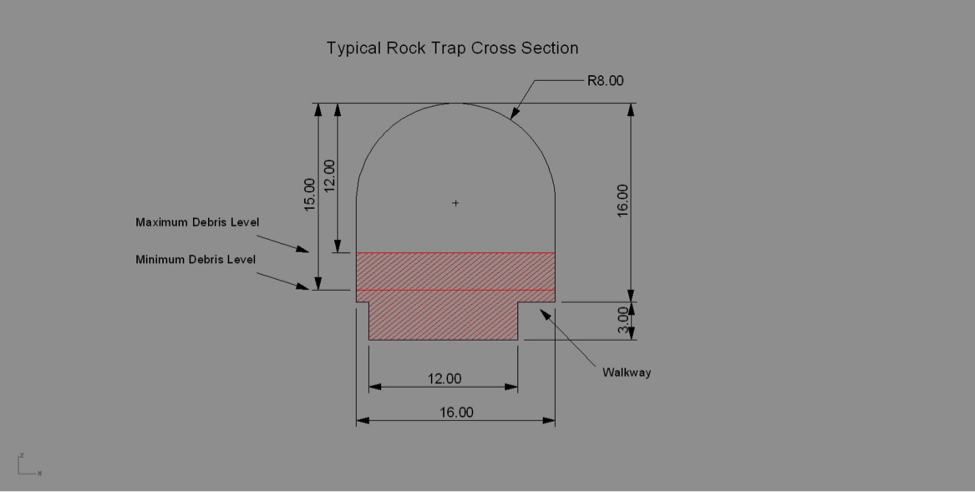ROV Rock Trap Sediment Removal Survey, Trash Rack Repair Inspection and Temporary Bulkheading Investigation
Hibbard Inshore was contracted to perform several structural inspections at two hydroelectric power plants in order to accurately define the conditions of a surge shaft, a rock trap, a trash rack and two penstocks. The purpose of the inspections was that the penstocks, rock trap, and trash racks were all in locations that were under high head pressure, were difficult to reach, and the customer did not want to dewater the tunnels during the inspection or subsequent work operations as that process would be very costly and could be risky to the tunnels’ integrity. At the first plant, the main focus of the inspection was on the surge shaft, the section of tunnel downstream of the surge shaft including the rock trap, and a trash rack located inside the tunnel downstream of the rock trap. These structures needed to be accessed through the surge shaft. The rock trap that needed to be assessed for cleaning was at approximately 355 feet of depth as was the trash rack. At the second power plant the inspection was of the surge shaft, power tunnel, and on taking three dimensional underwater measurements of the penstocks and bifurcation area to determine whether temporary bulkhead plugs could be placed in each side to allow for the removal of turbine shut off valves.
 Surge Shaft for Access
Surge Shaft for Access
At the first plant, the structures were inspected using the Navajo ROV equipped with dual sonar units and video cameras. The only access to the areas that required inspection was through the top of the surge shaft meaning that the ROV had to be hoisted to the top of the shaft and then lowered into the water. The invert of the tunnel was at A piece of conduit was found to be lying across the surge shaft and the ROV was able to identify areas of spalling with its video cameras. Upon entering the tunnel, the ROV was able to identify that a large amount of sedimentation and debris had completely covered the rock trap so that the divider walls could not be identified. Sonar measurements were taken along the length of the rock trap and compared to as-built drawings to determine the volume of debris present to allow for a ROV-based dredging plan to be put in place. At the downstream end of the rock trap, the trash rack was found to be severely damaged. The rack was made from several sections of steel bar and was anchored to a support beam that ran across the middle of the tunnel. The rack had failed as timber had lodged in between the bars of the rack and the subsequent pressure had likely caused the support beam and part of the rack to bend and fail. One section of the trash rack had moved down the penstock to a depth of 850 feet. The inspection allowed Hibbard Inshore to devise a method to use their ROVs for sediment removal in the rock trap, removal of the conduit in the surge shaft, removal of the damaged trash rack sections, and replacement of the trash rack. That work was completed in 2012, and is featured as a separate write up in the project gallery.
 ROV Video Capture Showing Trash Rack Failure
ROV Video Capture Showing Trash Rack Failure
At the second plant, the inspection equipment also entered the tunnel through the surge shaft. Three areas with surface spalling were located in the surge shaft, and these features were cataloged with location. In the tunnel, the portion inspected was the 900 feet of tunnel downstream from the surge shaft to the bifurcation of the penstocks and then down each penstock. The tunnel was inspected in two passes. The first inspection pass was along the invert heading downstream. The second inspection pass was along the crown heading downstream. A spall was located on the invert of the tunnel approximately 195 feet downstream of the surge shaft. The ROV was able to dimension this spall to be 2.5 feet wide by 1.5 feet long and several inches deep. This was the largest spall or feature located inside the tunnel. A sonar close up was recorded to measure the depth of this feature to give the customer an accurate depiction. Other notable features found were pieces of conduit laying in the invert and the concrete to steel liner interface. Three pieces of conduit on the tunnel invert appeared to be pieces that were attached to the conduit on the surge shaft wall. All three pieces were laying on the invert in line with the flow. The furthest downstream piece of conduit had an unusually large end on the downstream end.
 Buckled Horizontal Trash Rack Support Beam
Buckled Horizontal Trash Rack Support Beam
After inspecting that section of the tunnel, the bifurcation and penstock area were inspected in several phases. A visual inspection, 2D sonar cross section inspection and a 3D sonar inspection were performed. A number of features of interest were detected in addition to the dimensions. One penstock was inspected all the way to the scroll cage while the inspection of the other penstock ended at the valve because it was not fully opened. The ROV used its 3D and 2D sonar to image and dimension the penstocks to determine potential locations for temporary bulkheads. During that inspection, a drain was located on in the invert just upstream of the split in the penstocks and just downstream of the end of the tunnel. This drain was 1 foot in diameter and about 0.8 feet deep until debris was visible. However, during this phase of the inspection, the most important feature detected was a divider post upstream of the split in the penstocks. This vertical post divided the 8 foot tunnel in half and was several inches wide and about 1.5 feet long in line with the flow. This feature had not been on the as-built drawings. It was found that the two penstocks split off of the bifurcation and began to taper. There was an elbow in each penstock and just after this elbow was the location of the turbine shutoff valve. The Hibbard Inshore inspection was able to identify and dimension good areas for the temporary bulkhead plug placement. The plug placement and replacement of the turbine shut off valves will be performed in 2013.
 CAD of Typical Rock Trap Debris Found by ROV Inspection
CAD of Typical Rock Trap Debris Found by ROV Inspection
In the past, due to the depth and confined locations, an expensive and risky dewatering would have been the only viable solution for these types of inspections and rehabilitations. Now, due to technological advances, some ingenuity and the experience at Hibbard Inshore, the inspections and maintenance work are entirely possible without removing the water from the structure.

